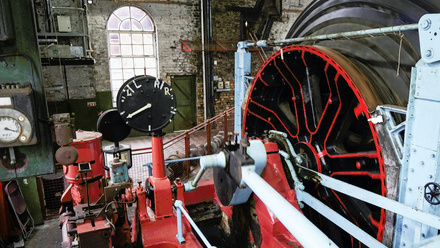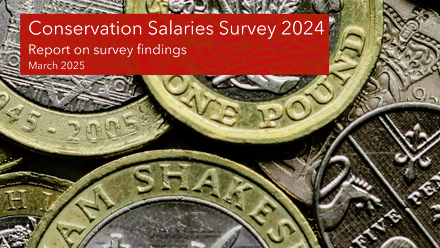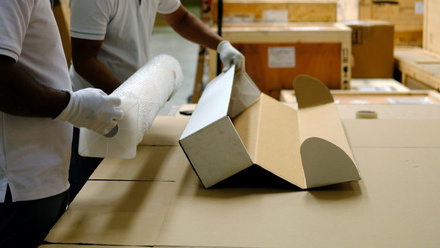Call for Chapter Editors and Contributors for Caring for Plant-Based Material Culture: A Conservation Handbook
Editors Lara Kaplan, Caitlin Mahony, and Ellen Carrlee seek chapter editors and content contributors for a new handbook on the care and conservation of plant-based material culture to be published by Routledge. Chapter editors will have oversight of one or more chapters and will be responsible for providing, soliciting, and organizing content as needed. Content can include entire chapters or shorter submissions, such as case studies or interviews. All voices and expertise are welcomed, and we are actively pursuing funding to support honoraria.
It has been more than 30 years since the exceptional book The Conservation of Artifacts Made from Plant Materials was published by the Getty Institute for Conservation and the text remains a key resource for practicing objects conservators and collections care professionals. Our handbook will build upon the topic and advance it through an inclusive and global approach. Our intent is to make a valued and accessible reference that can be broadly applied by conservators, source communities, artists, curators, anthropologists, botanists, collectors, curators, and more.
Potential editors and contributors may send a letter of interest or request further information to Lara Kaplan at [email protected] by March 1.
A proposed table of contents is listed below. We welcome thoughts from colleagues that would enhance the content of the manuscript and expand its scope.
CARING FOR PLANT-BASED MATERIAL CULTURE: A CONSERVATION HANDBOOK
PART I. USING AND CARING FOR PLANT-BASED MATERIAL CULTURE
Chapter 1. Access and Use in a Collections Context
- Current uses of plant-based collections by different groups worldwide for exhibition, loan, repatriation, ceremonial use, and research
Chapter 2. Collections Care
- Physical forces, temperature and relative humidity, light, pests, disasters, theft and vandalism, disassociation, loss of cultural context
- Recommended approaches for handling, labelling, storage, mounts, etc.
- Cultural or traditional protocols and considerations for care
- Sustainable practice
- Special considerations for herbaria in natural history collections (specimen sheets, wet specimens, and bulk dry samples), including how their biomolecular utility may be affected by preservation and conservation methods (e.g. species identification, isotopic studies, proteomics, and genomics/metagenomics)
Chapter 3. Collaborative Protocols and Networks of Care
- Building relationships with artists and local source communities
- Case studies
PART II: PHYSICAL OVERVIEW OF PLANT STRUCTURES, DETERIORATION, AND WORKING METHODS
Chapter 4: Botanical Overview and Common Construction Techniques
- Taxonomy, anatomy, chemistry, identification basics, general fabrication commonalities
Chapter 5: Roots
- Distinguishing characteristics, common mechanisms of deterioration
- Case studies in processing, fabrication, and preservation
Chapter 6: Stems (herbaceous and woody)
- Distinguishing characteristics, common mechanisms of deterioration
- Case studies in processing, fabrication, and preservation
Chapter 7: Branches
- Distinguishing characteristics, common mechanisms of deterioration
- Case studies in processing, fabrication, and preservation
Chapter 8: Leaves
- Distinguishing characteristics, common mechanisms of deterioration
- Case studies in processing, fabrication, and preservation
Chapter 9: Bark (inner and outer)
- Distinguishing characteristics, common mechanisms of deterioration
- Case studies in processing, fabrication, and preservation
Chapter 10: Seeds and Husks
- Distinguishing characteristics, common mechanisms of deterioration
- Case studies in processing, fabrication, and preservation
PART Ill: CONSERVATION TREATMENT APPROACHES
Chapter 11: Past Interventions
- Repairs from cultural use
- Obsolete historical interventions (unsuitable approaches and materials for cleaning and repair; use of lubricants and pesticides)
Chapter 12: Current Interventions
- Cleaning
- Selecting compatible repair materials (consolidation, mending, loss compensation, replication of missing parts)
- Reshaping
- Wetting/solvent issues
- Challenges found with plant materials from archaeological contexts
Glossary: featuring a selection of key technical terms
Our hope for this handbook is that it will provide guidance on preservation decision-making, taking into account the need for increased collaboration, consultation, and partnerships with source communities, and for developing and advancing culturally equitable and environmentally sustainable practices.






